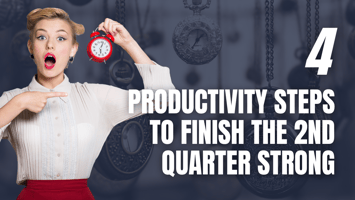The empty closet tends to fill over time.
Packaging Your Offer
Last week I unpacked the approach I take when outlining and identifying what I am selling and to who.
This week is focused on how I package this offer to maximize the amount of leads I have an opportunity to sell to.
By and large, the steps here will be heavily determined by the thing I am selling (product or service), who I am selling to, the platform, and the price point.
For example, if I am selling a consumable product, priced at $7.99, to 20 year olds on TikTok…I may not need much more than a great headline, image, and caption for prospect to make a purchase.
However, if I am selling a $10,000 software package to executives at large corporations…it may be unreasonable to believe they will make the impulse purchase of my service.
In this instance, it can be important to separate out your Core Offer from an Engagement Offer (most commonly known as a Lead Magnet).
The purpose of the Lead Magnet (or Engagement Offer) is simple - capture lead information, gauge a level of interest with your product or service, and open the door to a relationship. (Most effectively paired with conversations)
While the corporate executive may not make a $10,000 purchase simply by seeing my ad, they may opt in for a free demo, white paper, webinar, checklist, or something else related to the solution my core software solves and provides the prospect value in the moment.
I have found that the best lead magnets (Engagement Offers) tend to solve a micro problem for the prospect. This could be a knowledge gap they currently have, it could be a quick way to fix a specific sales funnel, etc. Ideally, the solution opens the door for the prospect to see the bigger problem that they have yet to solve…the problem that only my core offer can solve. This is the beginning stage of helping the prospect identify that they have an issue, so that, through conversation they will be able to articulate that they have a need…leading right into our sales process.
The key with these types of engagement offers is that they are best when used as a start to a relationship. To open the door to a conversation. Sometimes the conversation begins right away (with a follow up call or text post opt in), others may begin later on after they have warmed up to you a bit (shifting to a marketing nurture funnel). Either way, we want to be able to contact and connect with the prospect, build a relationship, and be available to help them make a purchase when the time comes.
Your marketing funnel can have a single lead magnet or several. Typically the longer the sales cycle and the higher the price of the core offer, the better your lead magnet value will need to be (or a greater volume of lead magnets may be required).
What are a few lead magnet examples you have used for your business in the past? Send us an email at office@actioncoachcentraltx.com with a few of your favorites.
Stay tuned for next week as we dive into the process of building your Marketing Consideration System (Relationship Development).

